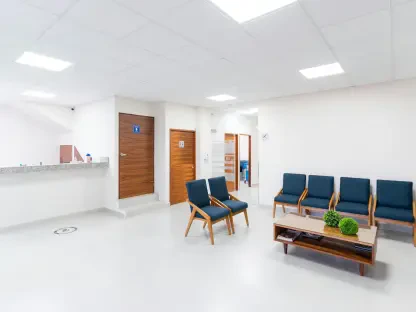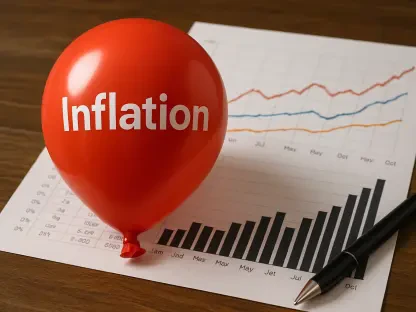The October 2024 report by the NFIB Research Foundation has signaled a notable increase in optimism among small business owners within the United States, with the organization’s Small Business Optimism Index rising by 2.2 points to 93.7. This data, collected by the National Federation of Independent Business since 1973, offers vital insights into the economic sentiment permeating the small business community. Although this uptick in optimism is a promising sign, the fact that it still represents the 34th consecutive month of being below the 50-year average of 98 reflects the ongoing economic struggles. Additionally, the Uncertainty Index soared by seven points to 110, marking the highest level ever recorded, indicating that business owners are navigating through a landscape fraught with unpredictability.
Sales and Employment Trends
Despite the rise in optimism, the report reveals some concerning trends in sales and employment, areas critical to business stability and growth. A net negative 20% of small business owners reported higher nominal sales over the past three months, a decline of three points from September and the lowest figure observed since July 2020. This drop in sales points to broader issues within the market, such as decreased consumer spending or increased competition, which can severely impact small business revenue streams. On the employment front, 35% of small business owners had job openings that they couldn’t fill, marking a one-point increase from the previous month. This persistent challenge of unfilled job openings hints at deeper systemic issues within the labor market, such as skills mismatches or a lack of available qualified candidates.
Moreover, 23% of owners identified inflation as their most significant business issue, highlighting the pressing concern of rising input and labor costs. Inflation can erode profit margins and lead to increased prices for goods and services, ultimately affecting the competitiveness and financial health of small businesses. In response to these challenges, a net 31% of owners reported raising compensation, which while being a slight decrease from September, indicates ongoing efforts to attract and retain talent. This adjustment in compensation reflects the intensifying battle for skilled labor, as businesses attempt to remain appealing to current and prospective employees amidst a tight labor market.
Positive Trends and Financial Stability
Despite these headwinds, there are some positive trends indicating resilience and potential recovery among small businesses. The net percentage of owners expecting higher real sales volumes rose by five points to a net negative 4%, the highest reading of the year. This improvement suggests that while the overall sales environment remains challenging, some business owners are beginning to see light at the end of the tunnel. Additionally, capital outlays have seen a slight increase, with 54% of owners reporting expenditures in the past six months and 22% planning to do so in the near term. This willingness to invest in their businesses indicates a degree of confidence in future economic conditions, hinting at potential growth and expansion opportunities.
Furthermore, a net 5% of owners paid a higher rate on their most recent loan, down from September and the lowest since January 2022. This reduction in borrowing costs provides a more favorable financial environment for small businesses, potentially easing financial burdens and enabling further investment. Inventory levels also showed a marginal improvement, with a net negative 9% of owners reporting inventory gains, up four points from September. This slight uptick could indicate better inventory management or an increase in sales, both positive indicators of operational efficiency and market demand.
Inflation and Profit Trends
Inflation remains a critical concern for many small business owners, with 23% citing it as their top issue. Higher input and labor costs due to inflation can significantly strain a business’s financial resources, necessitating price adjustments and creative cost management strategies. Though the frequency of owners reporting higher average selling prices fell slightly, wage compensation trends showed a significant portion, 23%, planning to raise compensation in the next three months. This demonstrates an ongoing necessity to balance the pressures of inflation with the imperative to maintain a competitive edge in the labor market.
In terms of borrowing conditions, the report indicates a relatively stable environment, with only 2% of owners reporting unmet borrowing needs and 3% identifying financing as their primary business problem. These figures suggest that, despite other economic challenges, small businesses are generally able to access the capital they need. Profit trends also experienced a slight positive shift, with a net negative 33% reporting positive profit trends compared to the previous period. The primary reasons for lower profits included weaker sales, higher material and labor costs, and lower selling prices, while those reporting higher profits cited better sales volumes, seasonal changes, and increased selling prices.
Future Outlook and Economic Landscape
Despite challenges, some positive trends show resilience and potential recovery for small businesses. The net percentage of owners expecting higher real sales volumes rose by five points to a net negative 4%, the highest reading this year. This improvement indicates that while sales remain tough, some business owners are seeing a glimmer of hope. Additionally, capital outlays have slightly increased, with 54% of owners reporting expenditures in the past six months and 22% planning near-term investments. This willingness to invest in their businesses shows a level of confidence in future economic conditions, hinting at growth and expansion opportunities.
Moreover, a net 5% of owners paid a higher rate on their most recent loan, down from September and the lowest since January 2022. This reduction in borrowing costs creates a more favorable financial environment, potentially easing financial burdens and allowing further investment. Inventory levels also improved slightly, with a net negative 9% of owners reporting inventory gains, up four points from September. This uptick could signify better inventory management or increased sales, both positive signs of operational efficiency and market demand.









